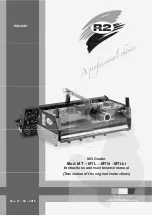
© 2022 System Q Ltd
1
Emergency Door Releases
Zap is a registered trademark of System Q Ltd
Document ref: qACC400-411
ACC400-402, ACC410-411 - Quick Start Guide
Door Releases
The ACC400, ACC401 and ACC402s activate the switch when
the glass is broken to open a door in an emergency. Range of
colours for flexibility and spare glasses are available. These low
cost units are supplied with a test key.
The ACC410 and ACC411 are resettable emergency door
releases with protective covers.
User Information
·
There are no user serviceable parts, opening or attempting
to repair the product will void the warranty.
·
Do not install or use the device if the wires connected are
damaged or have been subjected to water ingress.
·
Shut off all power to the access control system before wiring
this device.
·
Maintain a clean and safe environment at all times.
Definition
NO (Normally Open)
- This is a contact which remains open (as default) until activated, during the
"active" state the contact provides a closed circuit and starts conducting.
NC (Normally Closed)
- Is the opposite of a NO contact. The contact will remain closed (as default)
until activated, during the "active" state the circuit breaks and stops current flow.
Setup Examples
Emergency door releases are used in
access control systems to provide
permanent / semi-permanent
switch to either open or close a
circuit.
This examples shows a "Fail
Secure" and "Fail Safe"
scenario. For a "Fail Safe"
setup, the break glass or
button is activated, power
supply then releases power
from the lock, and if power is
lost then the lock also
releases.
Wire in NO or NC depending
on the access controller used
and also on the required state
of the lock during a "Fail-safe"
or "Fail-secure" scenario.




















